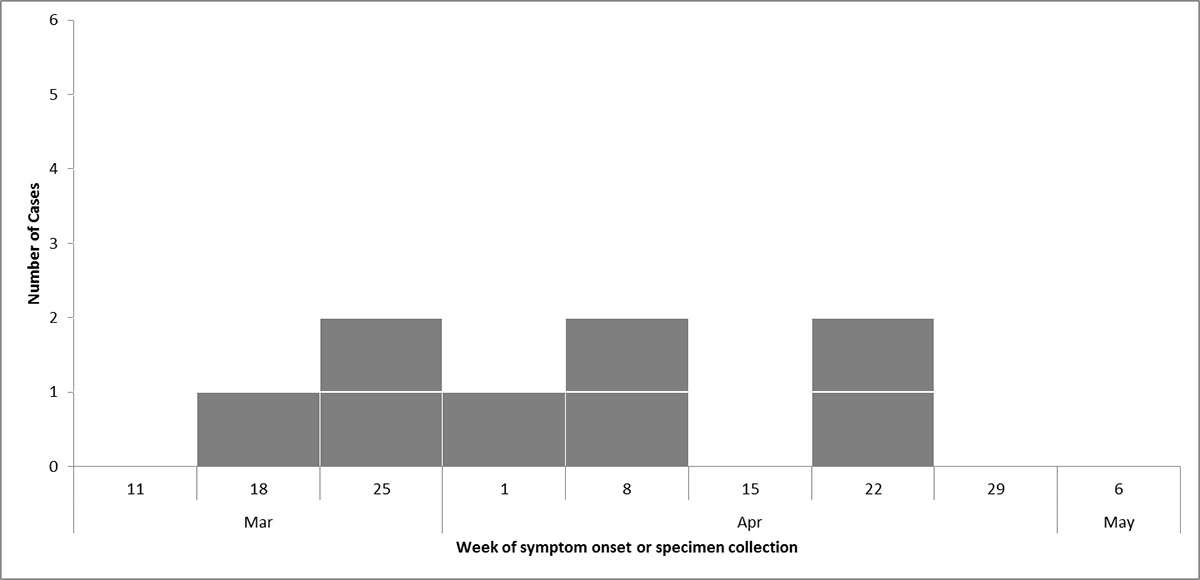Epidemiological information: Outbreak of E. coli infections linked to romaine lettuce
June 22, 2018
What is epidemiology?
Epidemiology is the study of disease in a population. Epidemiologists, or "disease detectives," use surveillance systems to identify those who are sick and confirm that the sick people are part of this event. They then gather information from the people who got sick and review the clues from all parts of the investigation that might reveal the cause of the illness event.
Related Public Health Notice
The figure below forms part of the epidemiological investigation into this outbreak. An "epi curve" (Figure 1) is a valuable reference tool in any epidemiological investigation. An epi curve shows when cases begin, when they peak, and when they trail off. Certain details of the people who got sick (Table 1) also help epidemiologists as they work to solve the questions involved in foodborne illness.

- Figure 1 footnote *
-
Dates available for 8 cases.
Figure 1. Number of people infected with E. coli O157 - Text description
| Week of symptom onset or specimen collection | Number of cases |
|---|---|
| 2018-03-11 | 0 |
| 2018-03-18 | 1 |
| 2018-03-25 | 2 |
| 2018-04-01 | 1 |
| 2018-04-08 | 2 |
| 2018-04-15 | 0 |
| 2018-04-22 | 2 |
| 2018-04-29 | 0 |
| 2018-05-06 | 0 |
Note: It can take several weeks from the time a person becomes ill to when this illness is reported and testing confirms a link to the outbreak.
|
|
| Outbreak status | Ongoing |
|---|---|
| Case count | 8 |
| Visitors to Canada | 0 |
| Provinces/Territories | 5 |
| Hospitalizations | 1 |
| Deaths | 0 |
| Gender (m:f) | 2 : 6 |
| Age range in years | 11-76 |
| Recall | No |